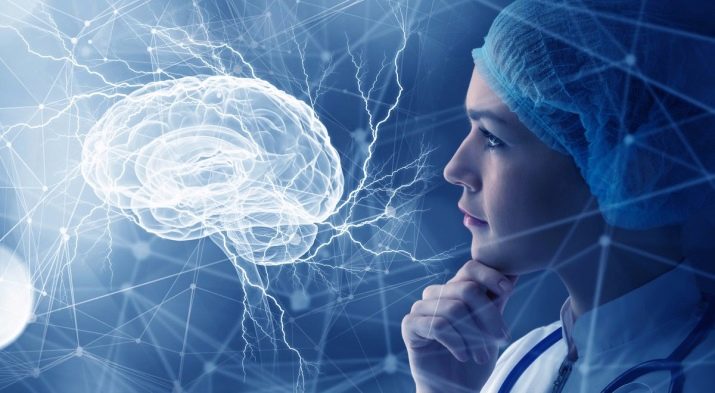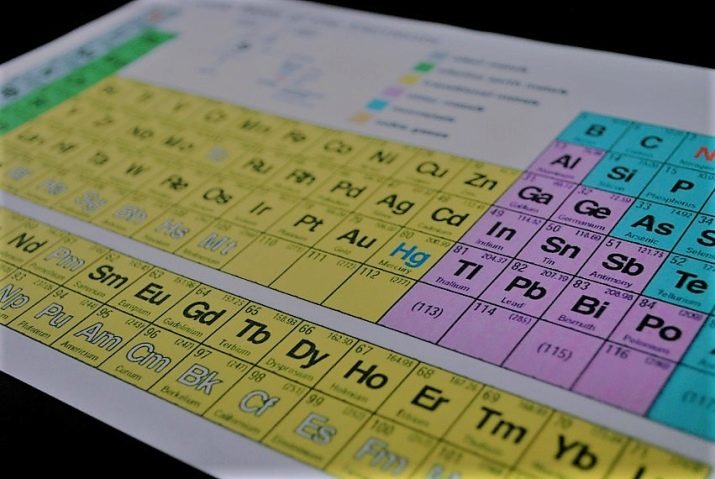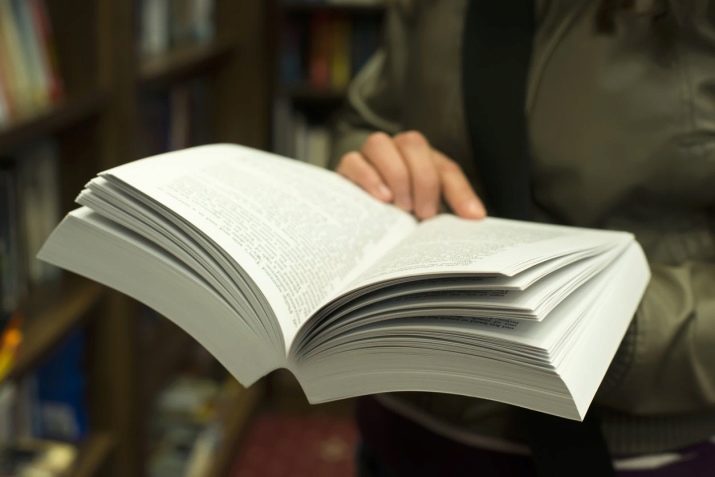Poets dedicate verses of memory - the basis of human consciousness. Without it, people will not be able to live and simply turn into certain creatures that will not have intelligence. One who has a good memory will never be lost in life. He will always find a good job and will be able to easily move up the career ladder. If a person has a well-developed perception, then it is easier for him to transfer the necessary information to long-term storage in his brain.
Let's understand what short-term memory is and why it needs to be improved.
What it is?
Need to know what exists short-term and long-term memory. Both concepts are very important for the intellectual level. In psychology, it is customary to use a short designation of short-term memory - KVP. It is a certain component of human memory, information for which is transmitted from tactile perception only when awareness of the actions of tactility passes. It is also launched from long-term memory with the assistance of the necessary elements of non-special memories. This combination allows you to save small information that is immediately used by a person. Therefore, such a memory is also called primary or active.

Let's see how short-term memory works.
The processes of quick processing of memories are controlled by the consciousness not in full, but in part. Therefore, information can linger in the human mind for only 20 seconds. And after 30 seconds, information from short-term memory almost disappears.
It is generally accepted that the capacity of the KVP is only 4-5 objects. When the intellect is connected to the process, the information content becomes more significant. For example, objects of human memory in this case can be natural landscapes or paintings (photographs), mental models (various tables).
If such data is placed in short-term memory, then it becomes distinct to one degree or another and has different sizes. It all depends on how developed this memory is.
It should be borne in mind that the amount of memory of this type can be increased using mnemonic and mental processes. They will unite in a single complex, and memory can already work with a vengeance.
General characteristics
Different people have short-term (mechanical) memory developed in different ways. She can work without thinking. If the amount of memory is limited, a natural substitution process occurs: when a person receives new information, the old is immediately erased in his brain.

KVP is a kind of information nurse. Information is processed, and then unnecessary is eliminated. “Overflow” of memory as a whole is not automatically allowed, long-term memory does not suffer. It turns out that without KVP long-term will not be able to work reliably. Only the information that was originally processed by the brain in short-term memory gets into the long-term.
In order for short-term memory to work well, it is necessary to maintain its activity. It is worth performing exercises that will be aimed at developing short-term memory. To improve memory, you need to focus on remembering a particular picture or various data. You can not be distracted by other objects.

The properties of short-term memory are directly proportional to human activity. The goals and motives of behavior are superimposed on it. If a person is forced to constantly perform the same manipulations that cause torment, or if he is constantly affected by an unpleasant irritant, this does not mean that all these undesirable events will be deposited in the long-term memory of the individual. On the contrary, meaningless information (stimulus) will be eliminated due to the fact that inhibition can turn on in the mind. Then the transfer of negative information into long-term memory will not happen.
KVP and DVP work completely independently of each other. This is especially evident when the individual suffers from retrograde amnesia. In this case, the unpleasant events that happened to him are completely deleted, and the events from the distant past remain conscious.
If an individual suffers from anterograde amnesia, then both directions are preserved in his mind - long-term and short-term memory. Nevertheless, in this case, the introduction of new information into the fiberboard becomes impossible. Although both directions of memory work like a clock.

Consider the main characteristics of short-term memory.
Volume
This parameter takes into account the optimal amount of data stored in the head. This parameter is determined only for an adult. It is generally accepted that the optimal amount of short-term memory has an average of 7 elements. However, some fluctuations can occur to a smaller or greater side in the form of two elements.
Of course, it is better to have an average or high rate. This will talk about a pretty good short-term memory. With a decrease in the indicator below 5 elements, violations occur that must be corrected by treatment.
D. Miller made a discovery, explaining that as you learn the above elements are able to combine into blocks. Many people process two blocks of information at once. For example, a driver can drive a car while talking with a fellow traveler.

Filtration
As mentioned above, short-term memory is needed in order to separate the necessary information from the unnecessary, and then delete the latter. Unnecessary information surrounds us everywhere, and if it is completely absorbed by the consciousness, then the person will lose orientation in the environment. For example, if an individual perceives and memorizes extraneous sounds and pictures for a long time, then the basic information will simply go nowhere.
During the lecture, the student carefully listens to the lecturer and remembers only the teaching material. And extraneous things in the form of a car horn or the color of the lecturer's clothes are automatically eliminated in his mind.
But the information that got into the brain during sleep becomes long-term. And it doesn’t matter if they make sense or not.
Long-term memory translation
The hippocampus is the base where one of the main centers of memory is located. Note that the memory itself is different. The hippocampus is activated when a person needs to memorize a certain path on the track diagram or determine the location of the necessary objects.
And yet the information in the hippocampus does not remain for long, since this part is considered a short-term storage. Here, a short-term memory transition to a long-term memory simply takes place. This is how knowledge moves from the hippocampus to other areas of the head. In order for this process to be successful, a person must fall into a dream: only the process of sleep can give electrowaves during slow falling asleep, without which the previously obtained information will simply disappear.

In the hippocampus, there are no memories of events that occurred in the individual’s personal life. Such memories quickly move into the peririn cortex. And here is the transformation of short-term memory into long-term.
There is only one conclusion - the hippocampus is needed for memory consolidation. It works when a person is sleeping. That is why some people can read a poem several times before going to bed and retell it by heart in the morning.
And you also need to consider that long-term memory directly depends on the CVP. For example, if short-term memory cannot remember and store information properly, then fiberboard will directly suffer from this. Therefore, different people reproduce the same events in their memories in different ways. Just some can remember the information well, while others can not.
Stages
As we already know, in everyday life, when people do not pose the direct task of remembering something, they have a short-term memory. The image lasts about 30 seconds, and then it is erased. But then, when an individual tries to remember any information or picture (and be sure to keep this information in his head), he uses such a property of memory as memorization. It is memorization that includes three stages, we will consider them.
The first part is coding. How it works? First, the person focuses on the image. At the moment, he completely ignores all the excess that surrounds him at the time of encoding.
We give an example. You need to remember the periodic table. You memorize and do not look at what is happening around you. Therefore, when you try to reproduce the numbers from the table, then you can easily do it. However, at the same time you will not remember how at that time a car signaled under your windows.

It must be borne in mind that each person is individual, therefore information is encoded differently in all people.
- By visual perception. When this happens, then you just see the picture in full detail and remember it, as if photographing. But eidetic memory is very unusual for many people. Incidentally, it is also called photographic. Usually highly intelligent people possess such a memory.
- By acoustic perception. This perception is also called phonological. It just works. When a person tries to remember something, he simply repeats the information out loud.
Short-term memory includes two compartments. Specialists call them repositories. Each vault belongs to a different brain structure.One compartment is considered acoustic and is located in the left hemisphere. The luggage of knowledge that was obtained with the help of hearing is put aside in it. The other compartment is considered visual-spatial and is located in the right hemisphere. It contains knowledge that was obtained through vision.
Long-term memory contributes to the manifestation of the second part - this data storage. As we already understand, long-term memory may contain pictures from the past, childhood memories, youth, any events and much more. And such storage of information has no boundaries, unlike short-term memory.
AND the third part is reproduction. At first glance, short-term memories come to mind much easier than long-term ones. Long-term memories must first be found and brought out, that is, to start brain activity. It takes time. And short-term involve the memorization of 7 elements.
If you need to find a specific house number, which consists of three digits, then you can remember them quite quickly.

Kinds
It is important to know that short-term memory is divided into types by storage time - there is:
- instant memory, when information is destroyed after 20-30 seconds;
- operational when you need to save information, while any decision is made.
Short-term memory has several types. And how these people depend on these types of information stores information.
For example, an individual with short-term speech memory will better remember data from lectures. And a person with visual memory will learn the lesson better if he writes them off the board.
So, we will consider these types in more detail.
Audial
This memory is also called auditory. In this case, the perception of information is absorbed through the hearing aid. When a person hears something, he simply remembers it. You can remember well only when the information is also spoken aloud. And if this is not done, then it will be erased within 30 seconds.
Visual
In this case, a person perceives data from outside with the help of vision and remembers a picture. When he needs to transfer information from short-term memory to long-term, he often uses speech coding. This is called the association method, which helps very well in remembering images.
Tactile
Tactility translates as “touch." This means that a person can memorize something through touch. And not everyone is capable of possessing such qualities.

Methodology for determining the amount of KVP
You can use the test for this. After its application, the amount of short-term memory is determined. In this case, the subject must remember the numbers for 20 seconds and try to recreate them from memory. The numbers are recorded by the test subject on paper. So, the numbers to remember:
- 15, 39, 87, 23;
- 94, 65, 79, 46;
- 83, 19, 84, 52.
If you memorized and wrote down 10 digits, then you have an ideal memory. The average level is characterized by 7 units.
Violations
Memory problems impair the quality of life. Their reasons:
- deterioration of health, vitamin deficiency, overwork, poor ecology;
- addiction to bad habits;
- cerebrovascular accident;
- various pathologies of the brain;
- injuries
- diseases related to the psyche;
- Alzheimer's disease;
- mental retardation.
When memory worsened, you can observe the following symptoms:
- when a person suddenly begins to recall and reproduce many events with abnormal speed - this is hypermnesia;
- the individual completely forgets the events that occurred in a certain period - this is amnesia;
- when a person’s memory is partially reduced, this is hypnosis.

General symptoms of memory impairment:
- forgetfulness or confusion;
- social maladjustment and inability to reproduce events;
- autism, confusion, problems with the nervous system.
How to improve?
Memory can be developed through a series of exercises.
- Ask your friend to write 20 words on a piece of paper. Remember them for 1 minute. Then write on a piece of paper what you remember. The more words, the better the memory. If it doesn’t work out well, then you need to train your memory and constantly repeat the exercise (only write new words each time).
- Try writing a series of numbers on a sheet so that each subsequent digit represents the sum of the previous digits. For example: 2 + 1 = 3, 3 + 2 = 5, 5 + 3 = 8, and so on.
- Another workout. You need to involuntarily open a book on any page and read 1 paragraph. Then try to retell the text as detailed as possible.
- Put 10 colorful objects on the table and remember their location, color, shape for 1 minute. Then cover the objects with a cloth and tell everything in detail about the objects seen.












